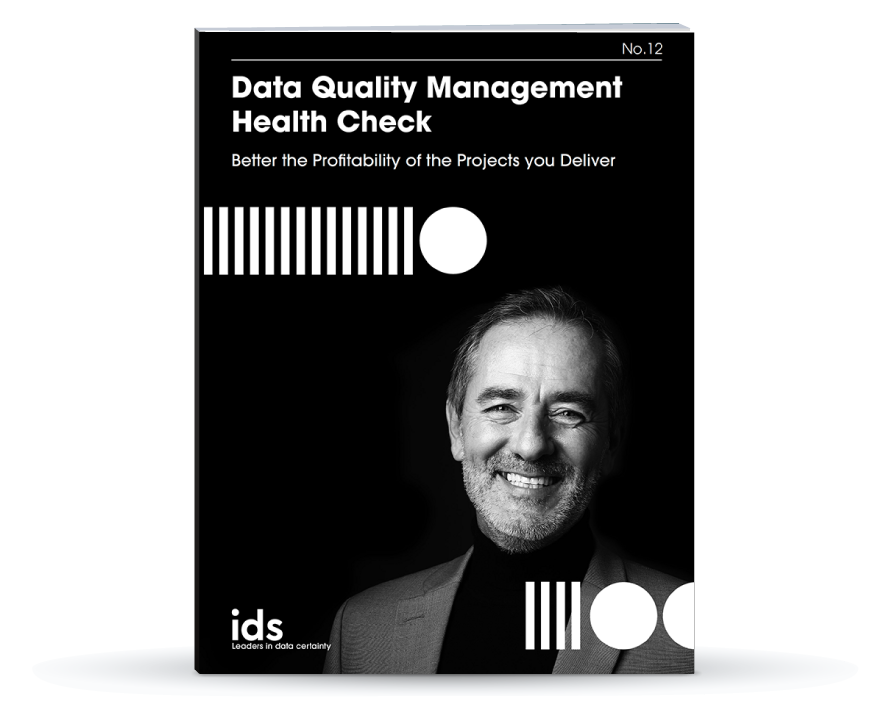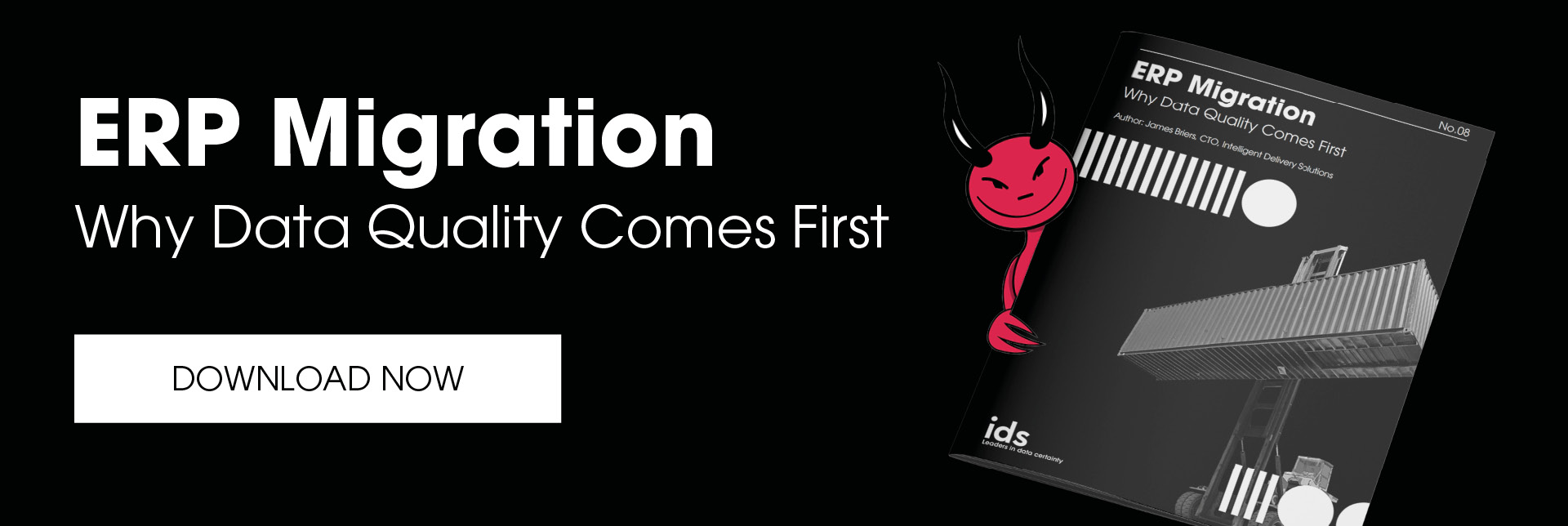4 Reasons Why you Don’t Want Poor Data Quality
.jpg)
Data quality is a measure of how accurate, and therefore effective, a data set is to serve a specific purpose within a business.
The insights provided by high quality data is crucial for organizations to determine how to meet their strategic goals.
The number of any company’s operations that rely on the visualization and insights gleaned from accurate information is vast. From, finance, to customer service, marketing, supply chain management and more.
Data quality can be measured by the accuracy, completeness, consistency, validity, uniqueness, and timeliness of the data.
To maintain high data quality, organizations can, and should, implement a range of data quality management techniques like metadata management and master data management.
Good quality data also supports organizations in complex data migrations. The availability of system-ready data that can be easily migrated, makes it easier for organizations to smoothly migrate it between applications, systems and from servers to the cloud.
The implications of overlooking the importance of data quality are immediate, expensive, damaging and present a legacy of risks and challenges.
Herewith are some of the worst.
The Four Most Damaging Implications of Poor Data Quality
Loss of Revenue
Businesses invest heavily in collecting customer data, but often fail to do anything with it once they have it. In essence, inaccurate customer data, minimizes opportunities for success.
For example, marketing campaigns based on poor customer data will be less likely to drive high-quality leads, or any leads whatsoever. It’s natural that prospects and clients will lose interest in a company if they do not find communications targeted and relevant to them.
Gartner recently estimated that poor quality data could cost some companies thousands, and for larger ones, nearly millions, in lost productivity and revenue each year.
Moreover, in the age of consumer privacy, handling customer data badly might cost a business more than the opportunity for revenue, with fines and reputational damage expensive and often played out very publicly.
Inaccurate Analysis
Conducting data analysis, or predictive analytics with incomplete or outdated data, is an incredible risk and it’s potentially fatal.
The are several common reasons for inaccurate analysis:
- Data is not collected in a timely manner or at all
- Data is not stored or maintained properly
- Incorrect or ambiguous data is entered into the system.
With duplications, missing fields and other anomalies underlying the data, the sheer waste of resources is an immediate impact.
However, the possibility of making strategic or revenue decisions without a single point of truth in the customer data can be catastrophic.
Damaged Reputation
Poor-quality data often causes customers to lose faith in a company. Such industries like finance are at high risk if the public becomes aware of their bank storing incorrect information relating to their accounts or assets.
With GDPR among other regulations implemented across Europe and throughout the world, businesses must carefully monitor the accuracy of marketing data to avoid sending personalized messages to the wrong people or face a hefty fine from the ICO.
A business’ unprofessional handling of sensitive data are often newsworthy and played out almost instantly in the media. Consequently, the business will experience a reputation decline in both the physical and digital world, promoting itself inefficient to potential and current customers.
Risks of Fines & Compliance Breaches
Maintaining good-quality data can be the difference between compliance and millions of dollars’ worth of fines.
In the event of a data breach, for example during a merger and acquisition, organizations are subject to fines from regulatory authorities.
The fines associated with compliance breaches can be damaging and may even exceed the cost of the system being protected by the compliance activity. Therefore, unintended mistakes could cost the organization profit in the long-term.
Data Quality Techniques to Resolve Poor Data
Data Cleansing
Among best practices to improve data quality for decision-making, the most vital is ensuring cleansed data exists in legacy and new systems.
A key step in data preparation, data cleansing speeds up analysis and model creation by finding and fixing issues in a dataset’s structure. This includes de-duplication, filling in whitespace and removing unwanted values through pre-canned transformation scripts.
This benefits organizations who save on overall time and cost from a more comprehensive database to base profitable decisions on.
Data Profiling
Data profiling is a data quality technique that helps visualize data issues before transformation.
The process is often applied to large datasets which can be time-consuming and costly to analyze. The process typically involves:
- Examining the dataset for errors and inconsistencies
- Identifying anomalies in the data, such as missing values, outliers, or duplicates
- Analyzing patterns in the dataset such as trends or relationships between variables that may be expected or unexpected.
Profiling anomalies and errors, as part of a data quality health check, can help avoid introducing more errors or inaccuracies in the datasets in future.
Data Mapping
Data mapping is necessary to create a cohesive data strategy. It's important to map the data assets so they can be deployed and mapped for easier visualization.
The relationships between datasets and how they are organized and where they are stored are all tracked during data mapping.
Mapping with audit trails also keeps the procedures for mapping reliable and repeatable to assure the data’s quality 100% of the time.
Quality Assurance
Any software application dependent on data must be assured after a data quality health check.
Following cleansing, profiling, and mapping, application quality assurance is performed in non-production environments. This allows data scientists to conduct realistic testing in compliance with data management regulations.
As an essential stage in data certainty methodologies, like Kovenant™, QA validates data quality before, during and after data migrations. To fulfil set criteria, data quality techniques include:
- Checking for duplicates or gaps in data, which could lead to future errors
- Ensuring all required fields are present and complete
- Assessing that all formatting requirements are error-free.
Most significantly, QA processes will lead to identifying potential risks to inform teams of how best to mitigate them.
Conclusion/Summary
Data trust is an essential requirement to maximize success opportunities. CDOs & CIOs must prioritize data quality techniques to exploit advantages of the big data landscape in 2022 to trust their data.
Simply put, if an organization is suffering from any one of the four critical reasons discussed, the outcomes could be catastrophic.
IDS’ data quality health check service is an extensive process that incorporates all the best practices of data quality techniques, using iData, to identify and eliminate any risks in your data.
Contact us to find out more.




.jpg?width=1200&name=IDS_Website-Image42_(1200x628).jpg)
